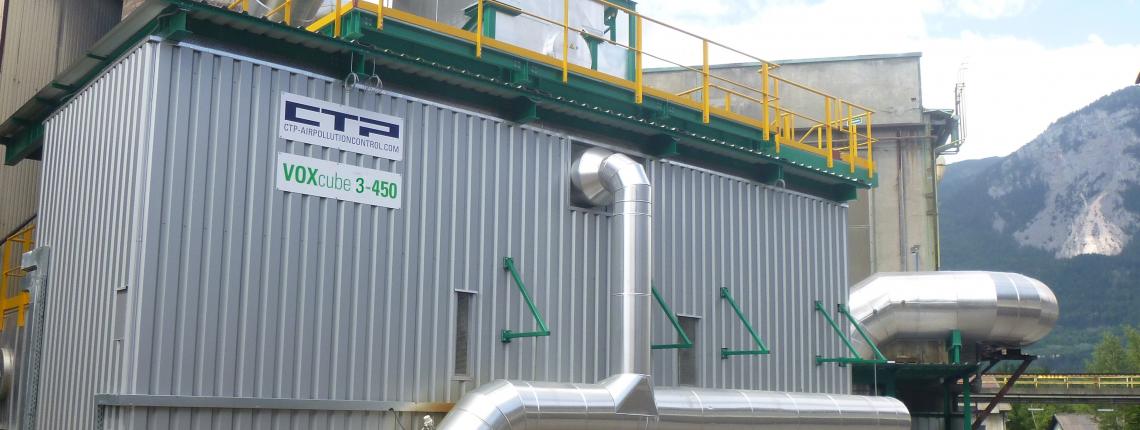Dioxins and furans: copper recycling

Dioxins and furans: copper recycling
Example: scrap copper recycling, cobalt for battery production
Similar tasks: metal recycling, roast processes, thermal waste disposal
When recycling metals - as in scrap copper recycling (mostly cable material) - toxic waste gases often occur. The raw materials to be recycled are injected in a shaft kiln that emits dust, organic contaminants, carbon monoxide, dioxins as well as furans. A high temperature bag house, a regenerative thermal oxidizer (RTO) with preheated raw gas, as well as a fixed bed adsorber which is regenerated via the RTO, all purify this complex waste gas.
The carbon monoxide part of 3-6 g/Nm³ generates an auto-thermal operation (additional burner switched off) which ensures an especially economical operation of this highly efficient installation. The toxicity of the waste gas requires highest destruction efficiency and a leak-proof RTO. This is guaranteed through a special valve construction and a hermetically sealed system. The fumes are recycled during the burn-off. When producing high quality batteries for electronic appliances, cobalt is needed. Cobalt is produced from metal chloride in a roasting process where dioxins, furans and several other contaminants occur. The required high destruction efficiency is accomplished through a specially designed catalytic oxidizer that is completely sealed and has no moving parts (Residual contamination in the purified gas < 0.1 toxic equivalent (TEQ) ng/Nm³).
Conclusion: CTP's expertise in catalytic, adsorptive and regenerative thermal oxidation technology in nanogram purification makes it the best partner for these hazardous industrial processes.

